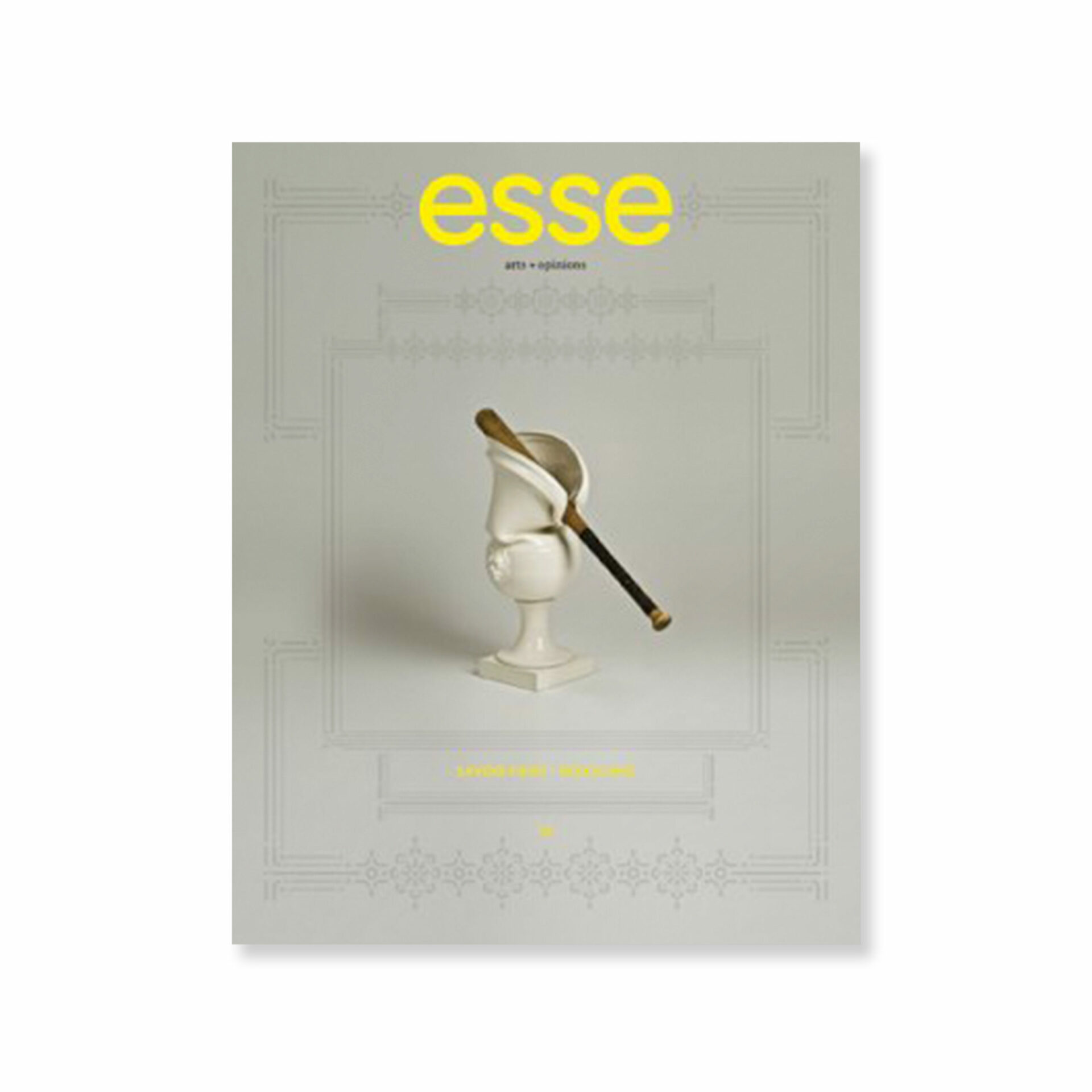I am Walking in a Room, Audio Art And Revealing
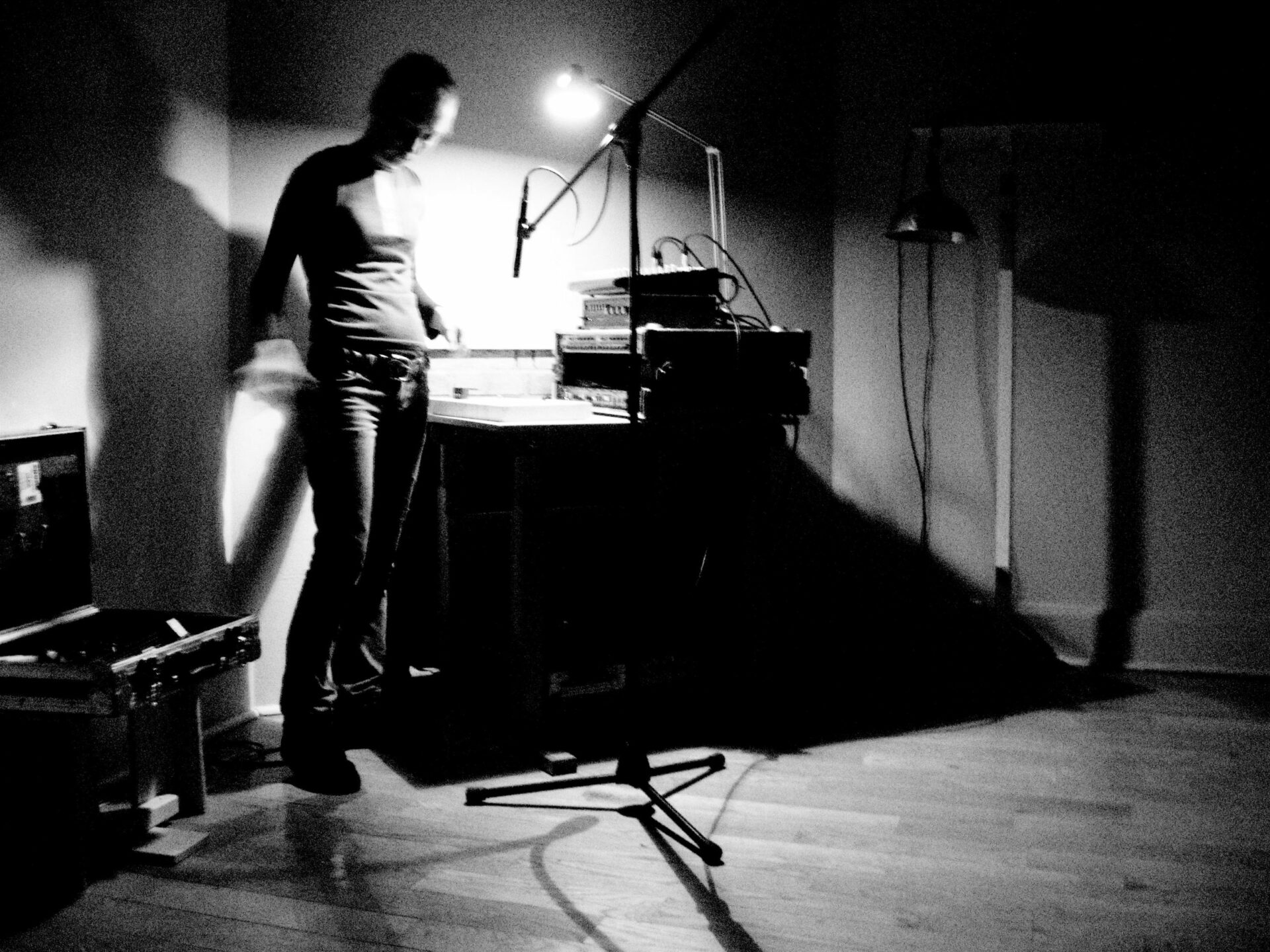
photo : Mél Hogan
http://en.wikipedia.org/wiki/I_Am_Sitting_in_a_Room: Thisis the single line emailed to me by Stéphane Claude, head of the audio sector at Oboro,1 1 - Oboro is a Montréal centre dedicated to the production and presentation of art, contemporary practices, and new media. hours after I described to him a small experiment I had conducted the night before. I had recorded my footsteps in Oboro’s large exhibition space. I then played this recording back into the room while simultaneously recording this new version. I repeated this process ten times. The recording became longer with each iteration, and slowly morphed into an insistent, almost synthesizer-like tone or chord. I later learned this was due to the resonant frequencies of the room itself, which are amplified with every “take.”2 2 - See www.oboro.net/chapman for audio recordings. Claude’s email good-naturedly pointed out that I wasn’t the first to try this. Alvin Lucier had done the same thing in 1969 with his work I am Sitting in a Room.
My experiment was part of a research and writing residency on the concept of audio art that I conducted at Oboro during the summer of 2011. During this time I sifted through Oboro’s large archive of documentation of audio artworks that have been presented or created there. I consulted publications, press releases, and web materials. I also conducted short interviews with a half-dozen Montréal-based audio artists with links to the centre. My recording initiative was a way of investigating what it would be like to create and present audio work at Oboro, noting especially the expansive, reverberant qualities of its grande galerie. In the end the process revealed something unexpected: evidence of the “colouration” of reflected sounds that occurs while we move through interior environments.
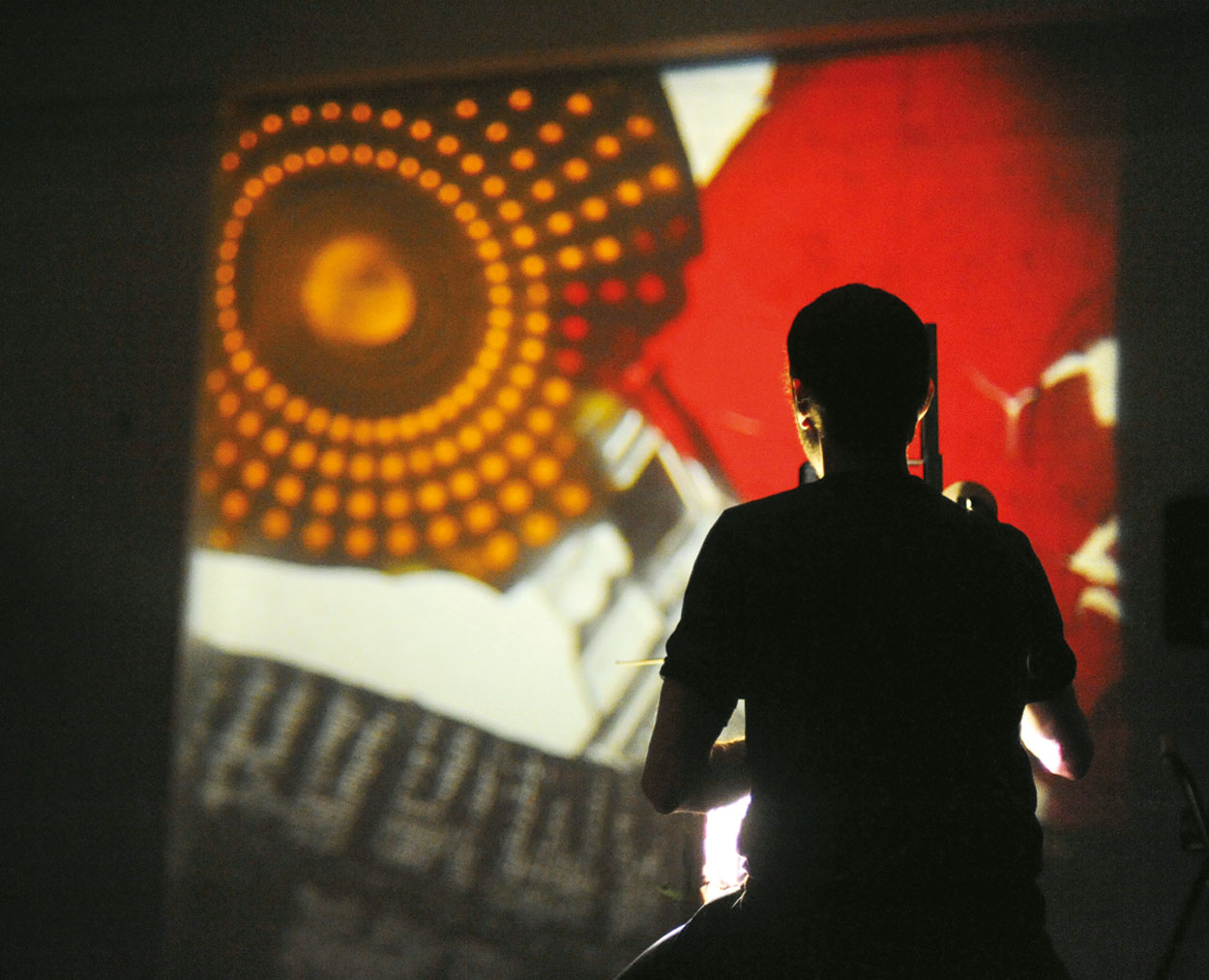
photo : Catherine Lefebvre, permission de l’artiste | courtesy of the artist
Art brings forth knowledge, energy, formed matter, and other types of “being” into “unconcealment” — a process that Martin Heidegger describes as “revealing.”3 3 - See Martin Heidegger, “The Question Concerning Technology,” in The Question Concerning Technology and Other Essays, trans. William Lovitt (New York: Harper and Row, 1977), 11–12. This bringing forth into unconcealment occurs through technology — the Greek root techne- applied not only to “activities and skills of the craftsman, but also. . . the arts of the mind and the fine arts.”4 4 - Ibid., 13. Artistic revealing involves a technological process of bringing elements together with a notion as to what can emerge from their juxtaposition. It is in and through such a gathering that what is revealed becomes clear — often via moments of surprise and/or improvisation. Revealing is about a reflexive mindset that does not approach technology instrumentally. It is respectful and enigmatic as the process always suggests the potential for further degrees of “unconcealment” as opposed to laying bare some ultimate truth.
The revealing involved in audio art occurs during the making of sound-based creative works. The task then becomes sharing what has emerged in a way that will provoke a similar feeling of having “witnessed” something — an aim that can take myriad forms. Following authors like Alan Licht and Brandon Labelle,5 5 - See Alan Licht, “Sound Art: Origins, Development and Ambiguities,” in Organised Sound 14, no. 1 (2009): 3-10 and Brandon LaBelle, Background Noise: Perspectives on Sound Art (New York: Continuum, 2006). I hoped it might be possible to distinguish between “audio art” and “sound art,” where the latter term would be retained principally for installation works that did not feature any temporal elements like “beginnings” or “endings” — thus distinguishing “sound art” from experimental musical performance, for instance, or studio-based electronic composition, to which the more open term “audio art” might be applied.6 6 - Oboro has supported many sound/audio art installation projects, including Marc Fournel’s Tontauben (2004), Robin Dupuis’ Commutative (2005), Diane Landry’s Le Bouclier Magique (2006), Érick d’Orion’s Solo de musique concrète pour 6 piano sans pianiste (2008); Catherine Béchard et Sabin Hudon’s Cubes a sons/bruits/babils (2008); Robin Minard’s Sounds on Paper (2008); and Max Stein, Julian Stein, and Nimalan Yoganathan’s Automatons & Secret Rhythms (2010). But the distinction did not stand up to the ways in which many of the audio/sound artists I researched spoke about their work and practice.
The notion of revealing, on the other hand — of bringing forth into unconcealment — while not determining the contours of audio art very precisely, does provide an arena in which discussions about what different pieces actually do can resonate with wider taxonomic questions. Audio art is a heterogenous concept where multiple, divergent examples are all we can use to explain the notion itself. The eclectic assemblage of works, events, and opinions I encountered in the course of my research reflects this point. What follows are a few examples that illustrate a diversity of practices, methods, and technologies employed. The different ways these pieces exemplify audio art troubles any easy demarcations in terms of form. Practices of revealing through audio technology, on the other hand, are conspicuous parts of each work.

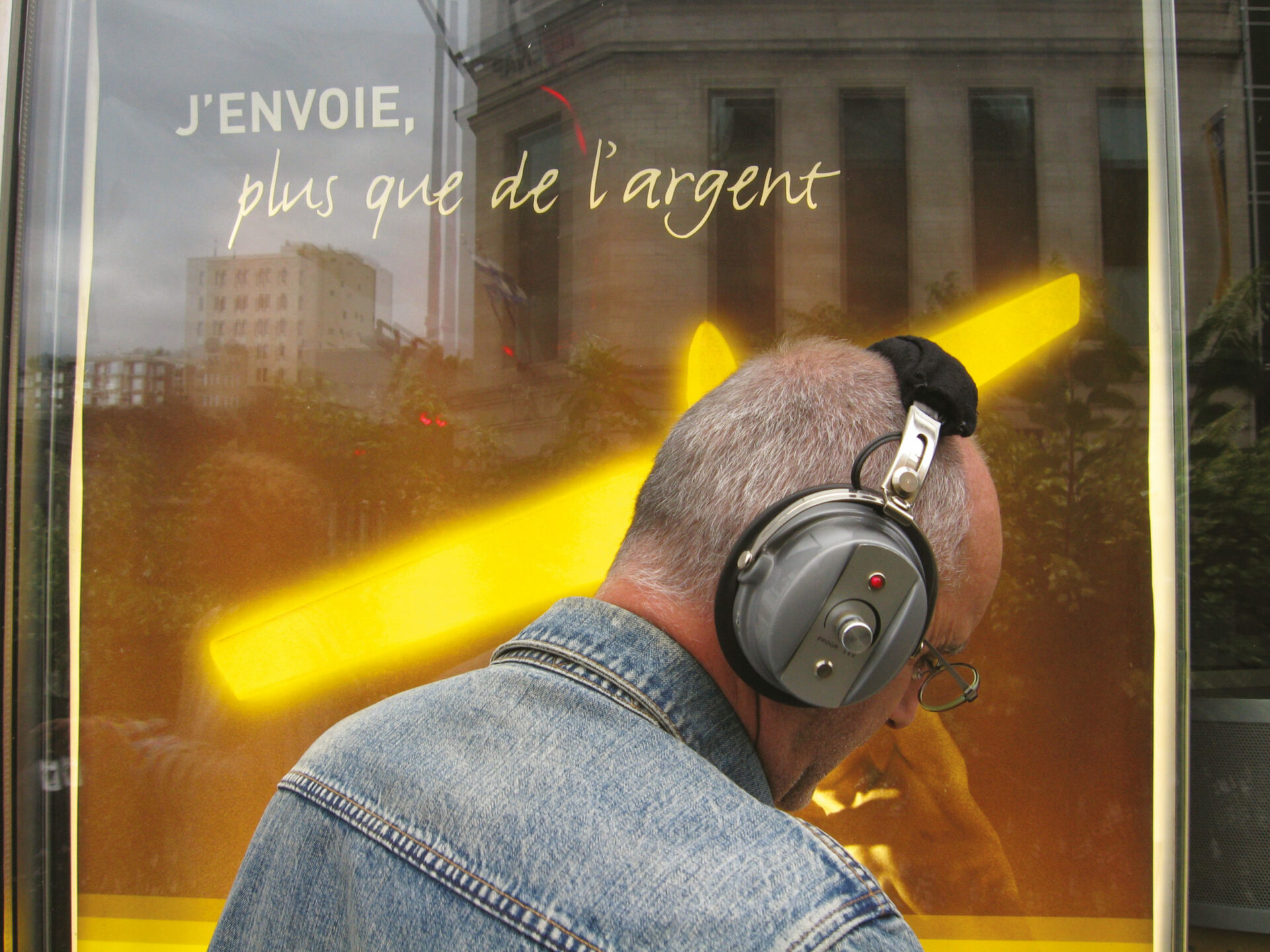
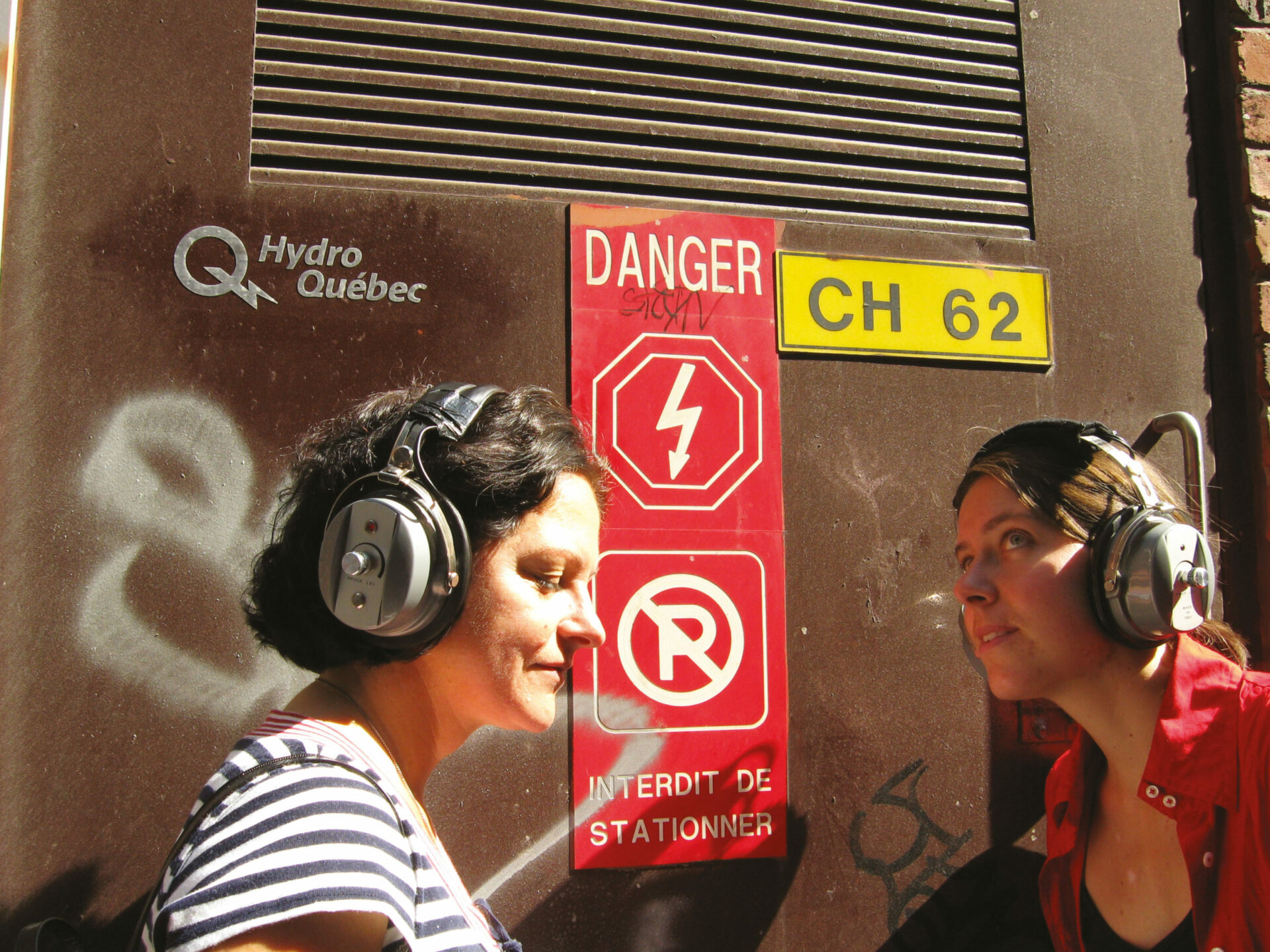
photos : permission de l’artiste | courtesy of the artist
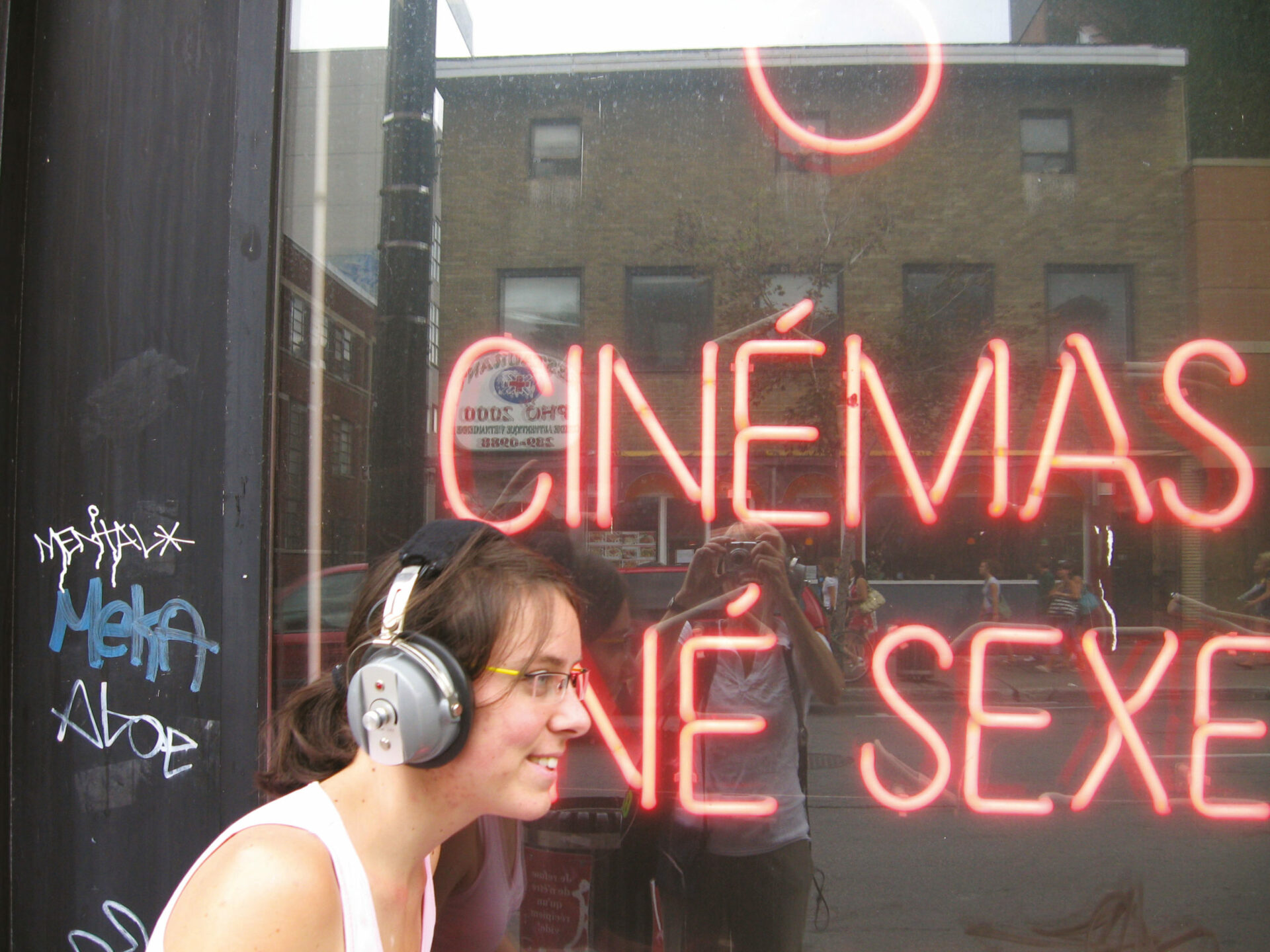
Nancy Tobin, Delay Toys – Berceuses pour grandes personnes
Delay Toys (2009) is mixed from recordings Tobin made with a collection of sound-making children’s toys, played by herself and Martin Tétreault, in the Oboro sound studios, and also by invitees whom she met with in locations that had some significance for them. Rhythms and musical tones are evoked in Tobin’s mix through a creative and varied use of delay, pitch-shifting, and other time-based audio effects. The piece is reminiscent of another work that Tobin produced in the Oboro studio, Ouverture (2007), which is an exploration of the sonic potential of a set of clock chimes. Both examples deploy overriding conceptual constraints that make the pieces interesting on the level of results, that is: what might working only with clock chimes or a box of children’s toys yield? Although resembling “experimental music” in many ways, both as listening experiences and also through their form as reproducible electronic compositions, the works nevertheless resonate with a conception of audio art as engaged towards revealing. These are non-instrumental technological initiatives, where processes of working with both high and low-tech devices uncover hidden potential in the sources gathered, recorded, transformed, and mixed.7 7 - Other recording and composition initiatives I encountered include Steve Heimbecker’s Songs of Place (2005); Chantal Dumas’ Les Petits Riens (2009); and Annie Martin’s Music for Insomniacs (2008).
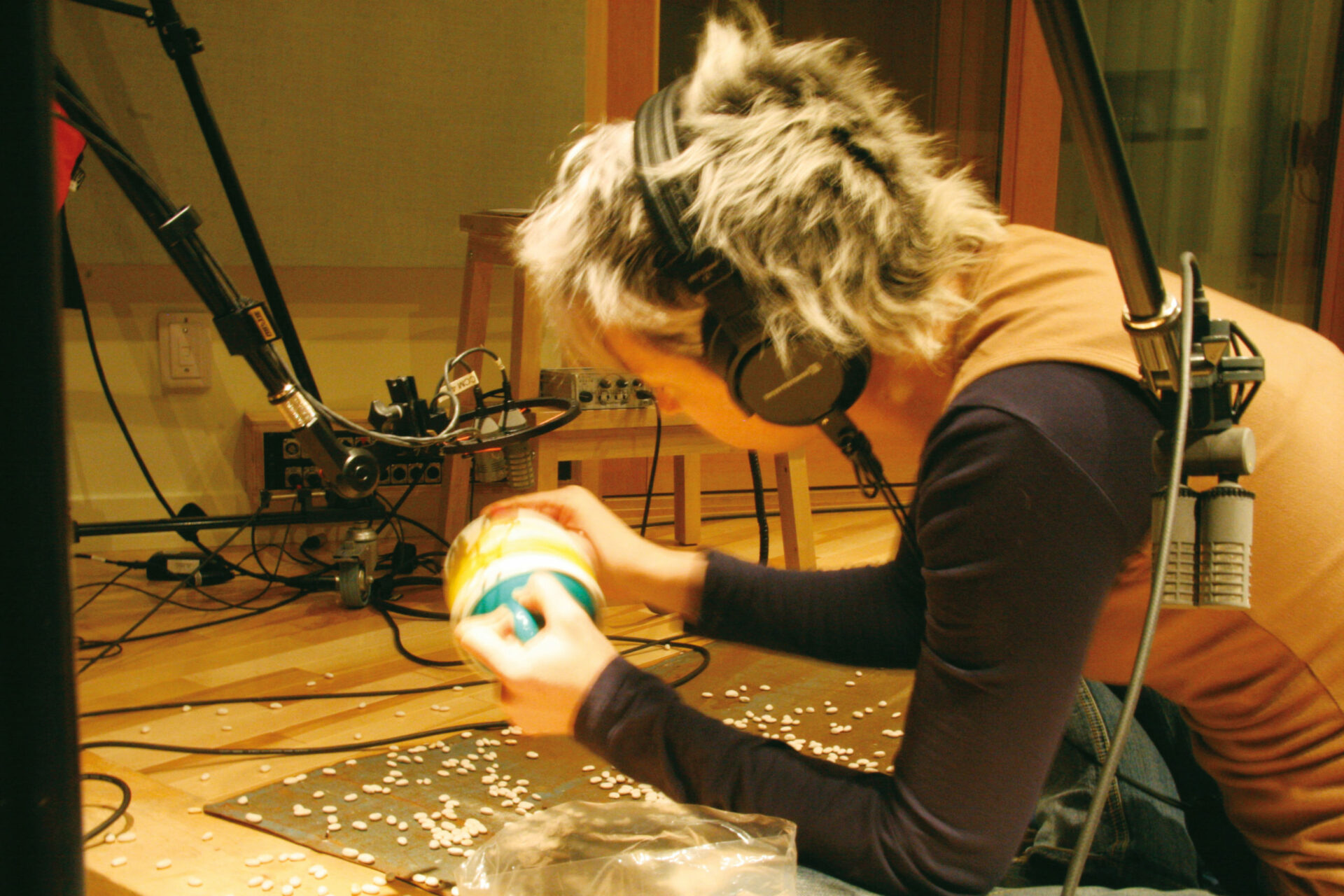
Régie Oboro, performance, Oboro, Montréal, 2007.
photo : Annie Tremblay
Christina Kubisch – Electromagnetic Exploration of the City
This four-day workshop (in which Tobin and Claude participated, along with a small group of Montréal sound artists) took place in September 2008, culminating in a structured surround sound improvisation presenting the group’s audio field recording initiatives. Highly performative, Kubisch’s Electrical Walks involve the use of specialized microphone and headphone kits that allow a walking recordist to capture the normally inaudible sounds of the inductive electromagnetic circuits that abound in urban environments, from laptop keyboard screeches to neon light drones. The recordings made by each workshop participant were quite distinct, reflecting the style, sensibilities, and contextual conditions for each recordist-explorer. The notion of revealing through a conceptual constraint returns again in this instance, highlighting also the ways in which performances occur during both acts of recording and presenting audio artworks. Kubisch’s method confirms how audio art can be more about an approach or mindset than specific sonic creations. The workshop model also corresponds directly with the suggestion that revealing in audio art first happens to the artist experimenting with new ideas who is then challenged to effectively demonstrate to others what has been brought forth.8 8 - Other recent workshop-based initiatives I encountered include (selected): Samuel Thulin’s There to Hear (2010) and Kaffe Matthews’ Sonic Bed as an Instrument (2010).
Magali Babin – Natura Sonoris
Natura Sonoris (2009) involves the live construction of a soundscape reminiscent of horror movie soundtracks. It was premiered at Oboro, developed in collaboration with Myléna Bergeron, and featured visual projections by Karl Lemieux and L’oeil de verre (Carl Fortin and Jean-Benoît Pouliot). It is composed from diverse audio recordings and a “lutherie acoustique” of sound-generating metallic objects to which are applied different forms of live analogue signal processing. When asked about her usual array of “instruments,” Babin responded: “All objects are sonorous. I have developed a tactile approach that I call the sonic geography of objects. Every surface, when explored, delivers its own array of regions, of zones that respond in unique sonic ways to different forms of manipulation. The contour of an object, for instance, is very different in terms of subtle acoustics when compared to its centre, both of which are interesting to amplify. What never ceases to fascinate me is how a single minimal gesture can create an incredible range of sonic textures.”9 9 - Magali Babin, August 29, 2011, personal communication. (Our translation.)
Although this work was presented as a performance event, and (as with Tobin’s Delay Toys) can certainly be considered “experimental music” (replete with live visuals), Babin’s reference to finding the sonic material that can be brought out of any object demonstrates again the centrality of revealing as a mindset intrinsic to audio art. Our environments are filled with quotidian sounds that we cause or hear and yet fail to notice. A performance such as Natura Sonoris reminds us of the sounds of everyday life, at the same time as it reveals the creative potential of such audio source material.10 10 - Other performance-based audio artworks that I encountered include Chris Carrière’s Soft Saturation (2011); France Jobin’s (I8U) series Immerson (2011–12); Nimalan Yoganathan’s Soundscapes of Inukjuak (2010); and Ce Qui Arrive (2008) by Chantal Neveu.
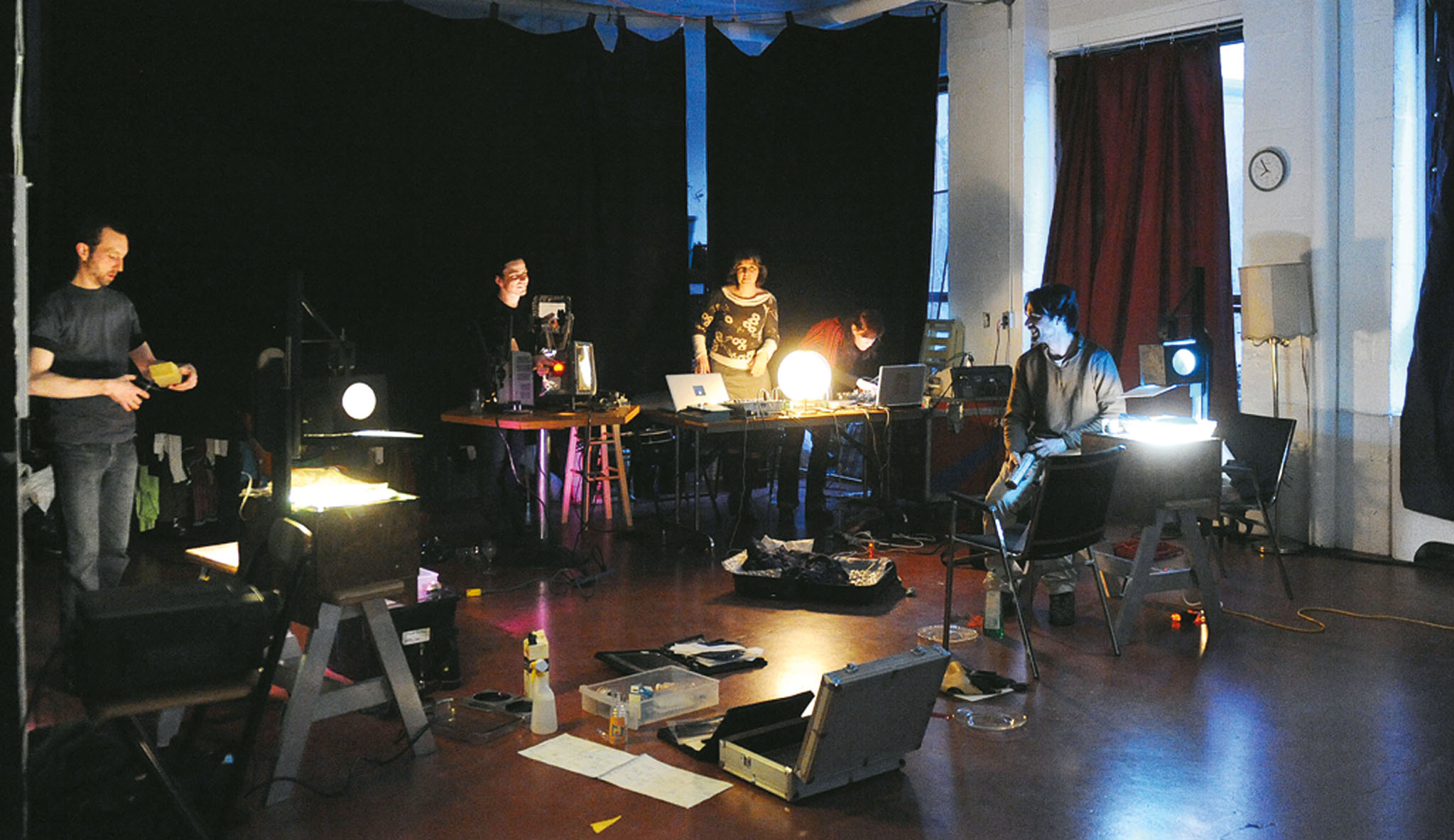
Jean-Benoît Pouliot, Karl Lemieux, Myléna Bergeron,
Magali Babin & Carl Fortin, Montréal, 2009.
photo : Catherine Lefebvre, permission de | courtesy
of Magali Babin
“Delay Toys is basically recordings that were manipulated in a way that, for me, is composing and from that work — that process — a work appeared. . . that people can listen to on their own in their own personal environments. . . on a CD or some other format. So whether that’s audio art or sound art, honestly I would say I couldn’t care less.”11 11 - Nancy Tobin, September 2, 2011, personal communication. I understand this attitude well. Too much concern over what category one’s work falls into can irrevocably skew one’s creative instincts. But basing an artistic practice on the medium of sound is a choice that warrants discussion. In addressing us through our sense of hearing, audio artists elicit empathetic, embodied responses to what they reveal. When witnessing audio art, we feel, in some small way, what it would be like to cause or perceive the sounds we are presented with in other situations, both fictional and real. These are, among other things, mnemonic, physical, psychological, social, and cultural responses. We are performed, in some senses, by what we hear in these instances. This is what it means to experience something being brought forth into unconcealment: we are moved, our expectations are undone, we are surprised. . . .
The “score” for I am Sitting in a Room consists of a short set of instructions on how to work with the equipment involved (two tape recorders and a microphone). It also specifies a particular text to read aloud, beginning with, “I am sitting in a room different from the one you are in now.” Lucier insists that other texts could be used, and he also provides a series of suggestions for different versions, including the use of more than one room, of multiple languages or microphone placements, as well as the open-ended suggestion: “Make versions that can be performed in real time.”12 12 - See Alvin Lucier, “I Am Sitting In a Room,” in Source: Music of the Avant-Garde, 1966–1973, eds. Larry Austin and Douglas Kahn. (Berkeley: University of California Press, 2011), 249 and www.ubu.com/sound/lucier.html. I am Sitting in a Room exemplifies the ways in which experimentally provoking sonic phenomena through technological manipulation can be considered central to audio art. Such revealing happens while creating and/or witnessing audio artworks and constitutes performance in the same way that an operation can be both performed “on” or “by” someone. Audio art draws attention to the nuances of the shared soundscapes that frame our daily activities — the “rooms” in which we all sit, walk, talk, move, share, hear, and listen.
